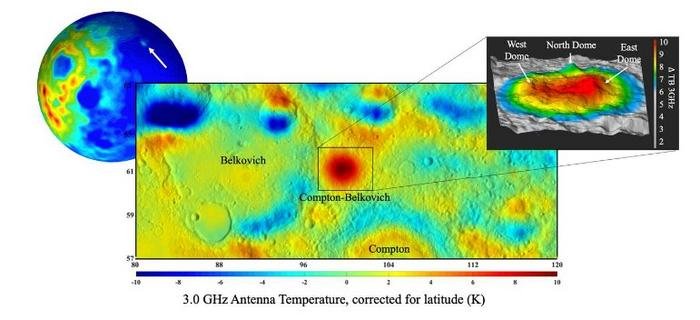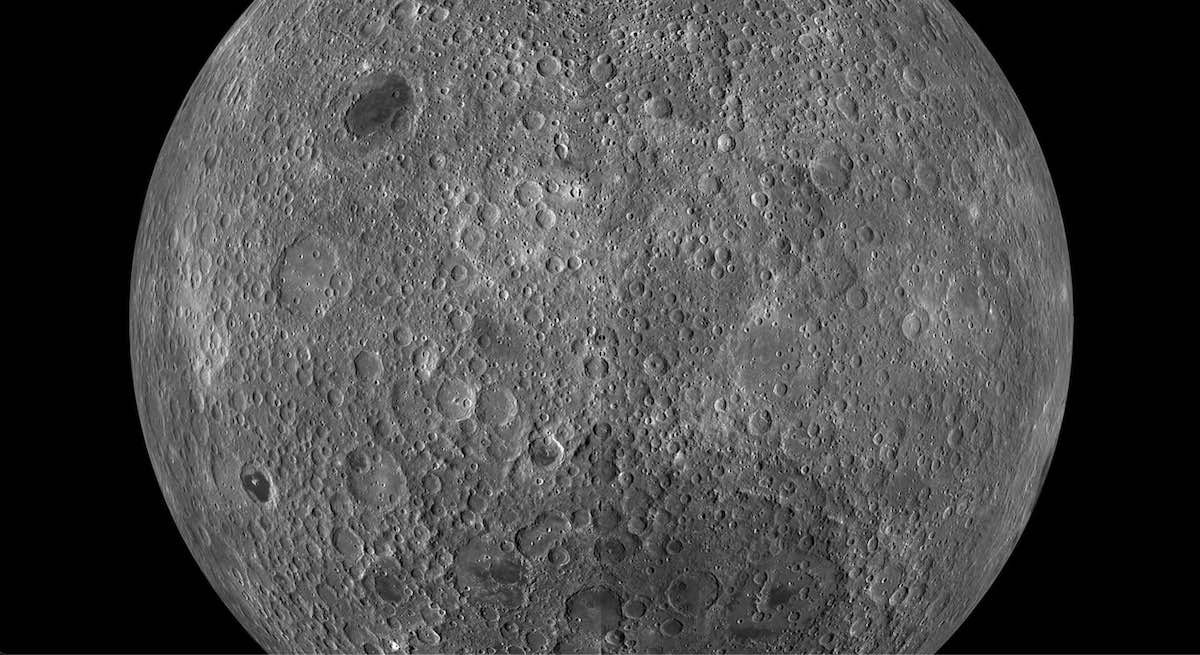It sounds like the plot of a science fiction film: scientists detect odd emissions coming from the far side of the Moon, leading to the discovery of something buried under the lunar surface that fundamentally reshapes how we see Earth’s natural satellite and its history.
However, the recent detection of a large, heat-emitting mass buried beneath the far side of the Moon is no scene from science fiction in this case. It is among a series of observations made by satellites in lunar orbit that suggest that Earth’s Moon may have a history much more like our planet than scientists once realized.
“We have discovered extra heat coming out of the ground at a location on the Moon believed to be a long dead volcano which last erupted over 3.5 billion years ago,” reports Matt Siegler, Ph.D., of the Planetary Science Institute in Tucson, Arizona.
Siegler, the lead researcher on a new study conducted by an international team that examined data collected from China’s Chang’E 1 and 2 lunar orbiters, along with supplemental data obtained by NASA’s Lunar Prospector and Lunar Reconnaissance Orbiters, says the discovery of the unusual object beneath the Moon’s far side initially baffled the research team.
“To tell the truth we were a bit puzzled when we found it,” Siegler said in a statement. Fortunately, his wife Rita Economos, Ph.D., a geochemist and one of the researchers involved in the study, was able to help provide context that allowed the team “to piece together the probable geologic cause of the heat anomaly.”
Based on the data, Sigler says the mysterious object is likely an ancient granite formation.
“It’s around 50km across, and the only solution that we can think of which produces that much heat is a large body of granite,” Siegler said.


Granite is formed when magma contained within a volcano that hasn’t yet erupted cools and solidifies. As a result of its formation, granite possesses significant concentrations of uranium, thorium, and other radioactive elements, which makes it very distinct from other stony materials found on the Moon.
Siegler says this makes it likely that a massive, below-ground granite formation is behind the anomalous heat emissions on the lunar surface that satellites have detected.
The granite mass was detected using a newly devised method of remote sensing that enabled the satellites in orbit around the Moon to measure geothermal heat emanating from its surface.
“This data showed a high geothermal gradient exactly coincident with a large 20 km wide silicon-rich surface feature believed to be an extinct volcanic caldera,” Siegler said in a statement. The formation is located between the Compton and Belkovich craters, and the area where the granite mass is believed to be located was revealed to be close to 10 C warmer than its surrounding terrain.
Siegler and the team believe the heat emission arises from the radiogenic materials that are present within granitic formations. Although they have narrowed down the likely composition of the mysterious lunar formation, the discovery came as a surprise since granites are not a common feature in our Solar System beyond our planet.
However, past missions to the Moon dating back to the Apollo era did previously reveal samples of granitic material recovered from the lunar surface.
Economos said that the mass is believed to be the remnants of unerupted magma contained within an ancient volcano, otherwise known as a batholith.
“El Capitan and Half Dome, in Yosemite in California are examples of similar granite rocks which have risen to the surface,” Economos said in a statement.
The team says this unexpected discovery on the far side of the Moon now suggests that similar discoveries could be made elsewhere on the Moon or even in other regions of the Solar System. However, according to Siegler, the fundamental takeaway from the discovery is that the Moon and its history are probably more like Earth than scientists previously realized.
Siegler called the granite mass “more Earth-like than we had imagined can be produced on the Moon, which lacks the water and plate tectonics that help granites form on Earth.”
In addition to shedding light on the Moon’s more Earth-like qualities, Siegler and the team say that the discovery also showcases the capabilities of remote sensing, which he says “will be useful in the exploration of other planetary bodies in the Solar System.”
Siegler and his team’s paper, “Remote detection of a lunar granitic batholith at Compton–Belkovich,” was recently published in the journal Nature, and their work will be presented on July 12th at the forthcoming Goldschmidt Conference in Lyon, France.
Micah Hanks is the Editor-in-Chief and Co-Founder of The Debrief. He can be reached by email at micah@thedebrief.org. Follow his work at micahhanks.com and on Twitter: @MicahHanks.

